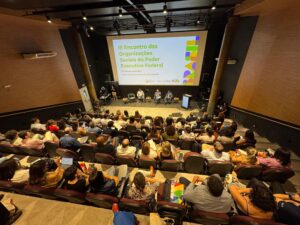Artificial Intelligence (AI) is increasingly present in our daily lives, whether we realize this fact or not. Automation of tasks in companies, such as pre-screening resumes, facial recognition systems, and even Instagram filters: these are just some of the activities in which we can find AI. Technology, which at first appears to facilitate and optimize a series of human activities, however, is not without problems. Understanding the path taken by Artificial Intelligence models to reach a certain result, for example, is one of them. The justification for decision-making using technology is fundamental to identifying possible biases and difficulties in the system, and it is a task that scholars in the field of computing focus on trying to solve.
The master's student in Neuroengineering at the Santos Dumont Institute (ISD), Jade Dias, aged 23, is one of them. Using a mathematical tool called Item Response Theory, Jade proposes a new way of analyzing these models, in an article entitled “Use and Interpretation of Item Response Theory applied to Machine Learning”, which was selected as one of the best in Latin American Workshop on Computational Neuroscience (LAWCN 21) and, with that, guaranteed publication in the journal Communications in Computer and Information Science, from the international scientific publisher Springer.
“Artificial Intelligence learning models end up working as a kind of 'black box', that is, it gives you a predictable result, but it doesn't tell you the path it took to get to that result”, explains Jade, who He holds a bachelor's degree in Science and Technology from the Federal University of Rio Grande do Norte (UFRN) and is also studying a bachelor's degree in Biomedical Engineering. In a practical way, this means that, when using an AI system to pre-screen a company's CVs, for example, we have no way of knowing what exactly the criteria were used to achieve those results, which results in ethical problems in the selection process. The same happens with facial recognition systems, whose use is often criticized by Human Rights groups for the lack of transparency in decision-making, which often generates losses mainly for racialized populations.
Being able to interpret these models, therefore, is an important step towards their improvement and credibility. According to Jade, there are several methods to try to make this interpretation, and what she did was adopt Item Response Theory as an analysis method. “There are several interpretation models, and I used one that is new and has been little applied until now, but which showed good results”, he highlights.
IRT, as it is known, is a branch of Measurement Theory applied mainly to assess knowledge in multiple choice tests and tests in general, such as the National High School Exam (Enem). It allows you to analyze which questions or items are most difficult within that model. Jade then used the Theory applied to machine learning (machine learning), to try to identify the main difficulties of the system and then increase the number of examples in these items to try to make them less problematic, as explained by research professor Abner Rodrigues, research advisor. “She used Item Response Theory applied to the Machine Learning, so that each model presents which data is most difficult to process. So, with this information, we can have extra information about how the model is making the decision”, explains Abner.
From then on, the examples that are considered more difficult or problematic start to receive hundreds of artificially increased examples to improve the model. “We use IRT to find the items that are most difficult and problematic, and then we increase these examples to train the model. What we identified is that yes, the model improves, and those items stop being so problematic as they are identified and the examples increase”, adds the professor.
According to him, the main innovation of the study developed by Jade is the use of defined criteria to choose which items need to be more “trained” because they are more difficult or problematic. “People already know that there are some criteria for you to increase a database so that the model works better, but these increases are made arbitrarily. The TRI is so that we can know what is problematic and use augmentation exactly to improve that”, says Abner.
Jade, who continues to study the topic, states that the work is not yet complete, but that recognition by the evaluation committee of the international conference was essential for them to see that they were on the right path. “It wasn't something I was expecting, because the complete work isn't ready yet. This is a part of my current work, so we didn't go all in on showing all of our work now, but it turned out that half of it ended up being enough to be classified as one of the best at the event. I was aware that what I was doing was really new, but this gave us even more fuel to continue our studies”, he highlights.
Text: Mariana Ceci / Ascom – ISD
Photograph: assigned
Communication Office
comunicacao@isd.org.br
(84) 99416-1880
Santos Dumont Institute (ISD)
It is a Social Organization linked to the Ministry of Education (MEC) and includes the Edmond and Lily Safra International Institute of Neurosciences and the Anita Garibaldi Health Education and Research Center, both in Macaíba. ISD's mission is to promote education for life, forming citizens through integrated teaching, research and extension actions, in addition to contributing to a fairer and more humane transformation of Brazilian social reality.













